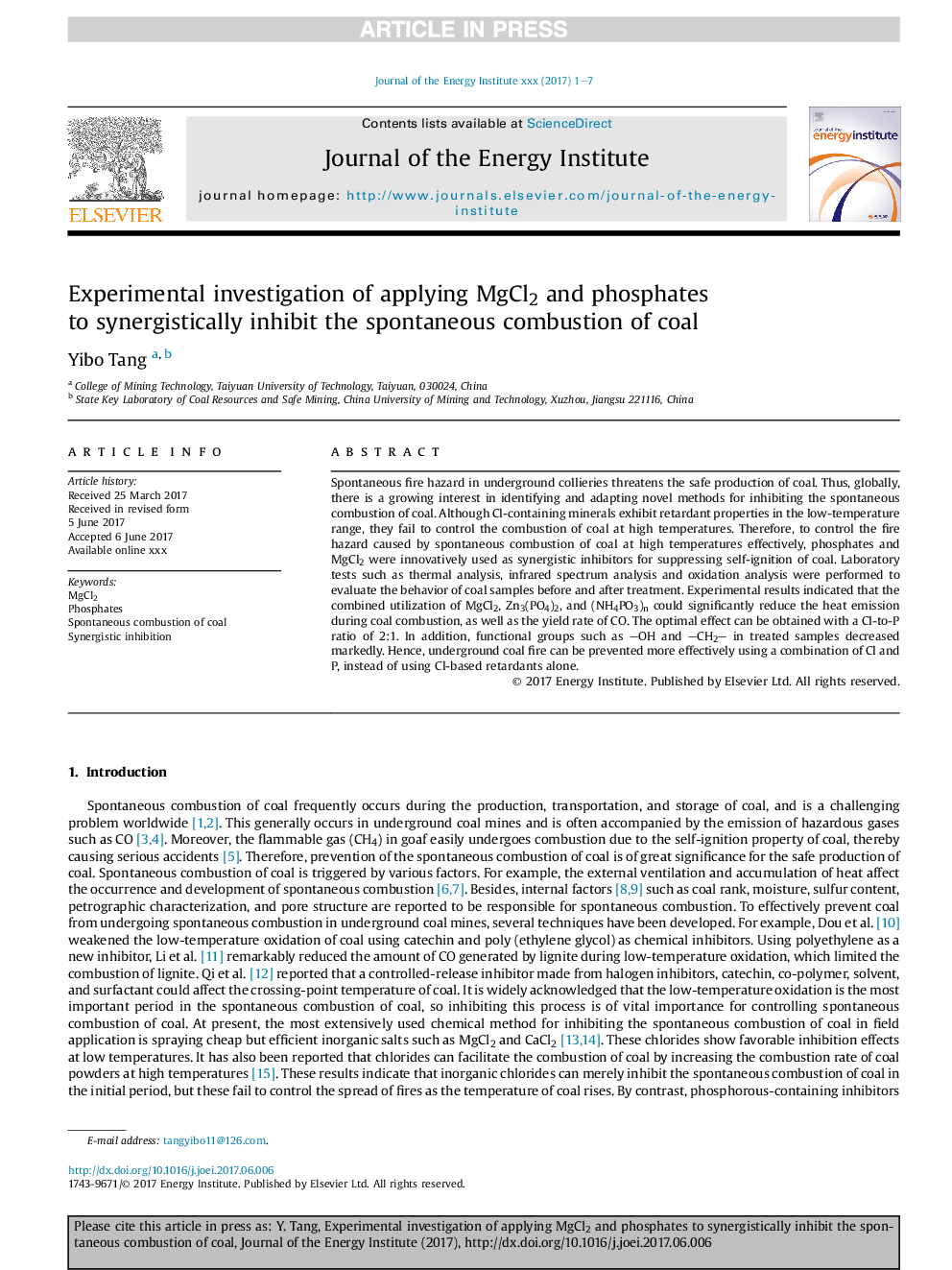| Article ID | Journal | Published Year | Pages | File Type |
|---|---|---|---|---|
| 8955752 | Journal of the Energy Institute | 2018 | 7 Pages |
Abstract
Spontaneous fire hazard in underground collieries threatens the safe production of coal. Thus, globally, there is a growing interest in identifying and adapting novel methods for inhibiting the spontaneous combustion of coal. Although Cl-containing minerals exhibit retardant properties in the low-temperature range, they fail to control the combustion of coal at high temperatures. Therefore, to control the fire hazard caused by spontaneous combustion of coal at high temperatures effectively, phosphates and MgCl2 were innovatively used as synergistic inhibitors for suppressing self-ignition of coal. Laboratory tests such as thermal analysis, infrared spectrum analysis and oxidation analysis were performed to evaluate the behavior of coal samples before and after treatment. Experimental results indicated that the combined utilization of MgCl2, Zn3(PO4)2, and (NH4PO3)n could significantly reduce the heat emission during coal combustion, as well as the yield rate of CO. The optimal effect can be obtained with a Cl-to-P ratio of 2:1. In addition, functional groups such as OH and CH2 in treated samples decreased markedly. Hence, underground coal fire can be prevented more effectively using a combination of Cl and P, instead of using Cl-based retardants alone.
Related Topics
Physical Sciences and Engineering
Energy
Energy Engineering and Power Technology
Authors
Yibo Tang,
